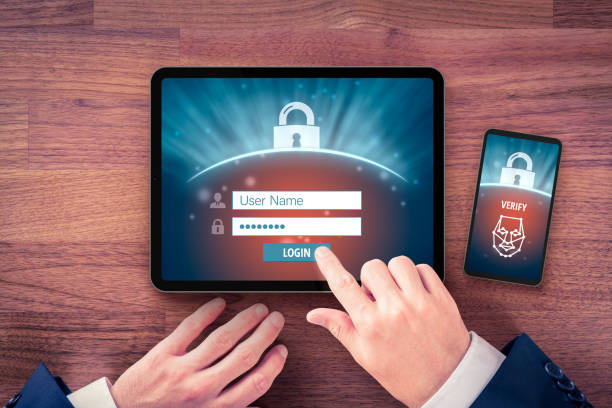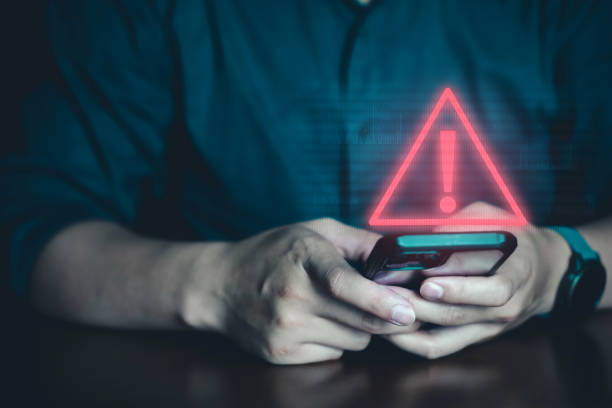Mobile devices have become an integral part of our daily lives, serving as our communication tools, personal assistants, and gateways to the digital world. However, with the convenience they offer comes the risk of security threats from hackers. That is why, in this article, we will talk about effective strategies to safeguard your mobile devices from malicious attacks. Keep reading to learn more.
Understanding the Risks
Hackers use various tactics to gain unauthorized access to mobile devices, including malware, phishing, and exploiting software vulnerabilities. The consequences of a security breach can be severe, ranging from identity theft and financial loss to the compromise of sensitive personal and professional information.
Best Practices for Mobile Security
Updating Software Regularly
Make sure that you regularly update your device’s operating system and applications because that is crucial for patching security vulnerabilities and ensuring optimal protection against emerging threats.
Using Strong Passwords and Biometric Authentication
Using complex passwords and utilizing biometric authentication features, such as fingerprint or facial recognition, adds an extra layer of security to your device. Try to use that.
Enabling Remote Wipe and Tracking Features
Enabling remote wipe and tracking features allows you to remotely erase data from your device in case it’s lost or stolen, minimizing the risk of unauthorized access to your personal information.
Avoiding Public Wi-Fi Networks
Moreover, public Wi-Fi networks are often unsecured, making them prime targets for hackers. So try to avoid connecting to public Wi-Fi networks when accessing sensitive information or conducting financial transactions.
Installing Antivirus Software
Installing reputable antivirus software helps detect and remove malware threats, providing added protection against malicious attacks.
Protecting Personal Data
Importance of Data Encryption
Encrypting your data ensures that even if your device is compromised, sensitive information remains inaccessible to unauthorized users.
Securing Sensitive Apps and Information
Utilize built-in security features, such as app locks and encrypted storage, to safeguard sensitive apps and information from unauthorized access.
Implementing Two-Factor Authentication
Well, enabling two-factor authentication adds an extra layer of security by requiring additional verification, such as a code sent to your mobile device, when logging into accounts.

Securing Physical Access
Securing physical access to your mobile device is crucial for protecting your personal information and preventing unauthorized access. Here are some strategies to enhance physical security:
Use Device Locks:
Set up a strong password, PIN, pattern, or biometric authentication (such as fingerprint or facial recognition) to prevent unauthorized users from accessing your device.
Enable Screen Timeout:
Configure your device to automatically lock after a period of inactivity. This ensures that your device remains secure when not in use and prevents unauthorized access by opportunistic individuals.
Avoid Leaving Devices Unattended:
Never leave your mobile device unattended in public places, such as cafes, restaurants, or public transportation. Keep your device with you at all times or store it in a secure location to minimize the risk of theft or unauthorized access.
Implement Device Tracking:
Enable features like “Find My Device” (Android) or “Find My iPhone” (iOS) to track the location of your device in case it’s lost or stolen. This allows you to remotely lock or erase the device to protect your personal information.
Use Secure Locking Mechanisms:
Consider using additional physical locking mechanisms, such as security cables or locks, when leaving your device unattended in shared spaces or public areas. These deterrents make it more difficult for thieves to steal your device.
Be Mindful of Where You Store Your Device:
Avoid leaving your mobile device in easily accessible or visible locations, such as on car seats, in open bags, or on tables. Store your device in a secure pocket, bag, or compartment to reduce the risk of theft or unauthorized access.
Secure Your Home and Workplace:
Take steps to secure your home and workplace to prevent unauthorized access to your mobile devices. Use locks, alarms, and surveillance cameras to deter intruders and protect your personal belongings.
Educate Family Members and Colleagues:
Educate family members, friends, and colleagues about the importance of physical security for mobile devices. Encourage them to practice good habits, such as keeping their devices secure and reporting any suspicious activity.
| Call 866-861-4084 for Internet Deals |
Top Mobile Phone Security Threats
Mobile phones have become indispensable tools in our daily lives, serving as personal assistants, communication devices, and gateways to the digital world. However, their widespread use also makes them lucrative targets for cybercriminals seeking to exploit vulnerabilities for nefarious purposes. Here are some of the top mobile phone security threats to be aware of. To know more about them, keep reading.
1. Malware Infections
Malware, short for malicious software, encompasses various types of software designed to disrupt, damage, or gain unauthorized access to mobile devices. This includes viruses, worms, Trojans, and ransomware. Malware infections can occur through malicious apps, email attachments, or compromised websites.
2. Phishing Attacks
Phishing attacks involve tricking users into divulging sensitive information such as login credentials, financial data, or personal details by masquerading as legitimate entities. These attacks often take the form of fraudulent emails, text messages, or fake websites designed to deceive unsuspecting victims.
3. Unsecured Wi-Fi Networks
Connecting to unsecured Wi-Fi networks, especially in public places like coffee shops, airports, or shopping malls, poses significant security risks. Hackers can intercept data transmitted over these networks, including usernames, passwords, and other sensitive information, through techniques like Wi-Fi spoofing or man-in-the-middle attacks.
4. Device Theft and Loss
The physical theft or loss of a mobile device can compromise the security of its data, especially if it’s not adequately protected with security features like device locks, encryption, or remote wipe capabilities. Unauthorized access to personal information stored on the device can lead to identity theft, financial fraud, or privacy breaches.

5. Outdated Software and Security Patches
Failure to regularly update the operating system and applications on mobile devices leaves them vulnerable to exploitation by cybercriminals. Security patches released by device manufacturers and app developers often address known vulnerabilities and strengthen defenses against emerging threats. Ignoring these updates increases the risk of security breaches.
6. Insecure App Permissions
Many mobile apps require access to sensitive device functionalities and user data to function properly. However, granting excessive permissions to apps can compromise user privacy and security. Malicious apps may abuse these permissions to collect and misuse personal information or perform unauthorized actions without the user’s knowledge or consent.
7. Jailbreaking and Rooting
Jailbreaking (iOS) or rooting (Android) refers to the process of bypassing device restrictions to gain privileged access and control over the operating system. While this can provide users with greater customization and access to third-party software, it also exposes the device to security risks. Jailbroken or rooted devices are more susceptible to malware infections and may void warranty protections.
8. Smishing Attacks
Similar to phishing attacks, smishing (SMS phishing) attacks use text messages to deceive users into clicking on malicious links or providing sensitive information. These messages often appear to be from trusted sources or institutions, enticing recipients to take action that compromises their security.
9. Bluetooth and NFC Vulnerabilities
Bluetooth and Near Field Communication (NFC) technologies enable convenient wireless communication between devices. However, they also introduce potential security vulnerabilities that hackers can exploit to gain unauthorized access to devices, intercept data transmissions, or execute remote attacks.
10. Social Engineering Tactics
Social engineering tactics involve manipulating individuals into divulging confidential information or performing actions that compromise security. This can include impersonation, pretexting, or exploiting psychological vulnerabilities to deceive users into disclosing sensitive information or granting unauthorized access to their devices or accounts.
How to Stay Safe on Your Mobile Phone
In today’s interconnected world, mobile phones have become essential companions, helping us stay connected, productive, and entertained. However, with increased reliance on mobile devices comes the need to prioritize security and protect ourselves from potential threats. Here are some essential tips to help you stay safe on your mobile phone:
1. Keep Your Software Updated
Regularly updating your mobile phone’s operating system and apps is one of the most effective ways to ensure its security. Updates often contain patches for known vulnerabilities, strengthening your device’s defenses against emerging threats.
2. Use Strong Passwords and Biometric Authentication
Secure your device with a strong password, PIN, pattern, or biometric authentication methods like fingerprint or facial recognition. Avoid using easily guessable passwords and enable additional security features like two-factor authentication for added protection.
3. Install Apps from Trusted Sources
Only download and install apps from reputable app stores like Google Play Store (for Android) or the Apple App Store (for iOS). Be wary of downloading apps from third-party sources, as they may contain malware or other security risks.
4. Review App Permissions
Regularly review the permissions requested by installed apps and limit access to sensitive device functionalities and personal data. Avoid granting unnecessary permissions that could compromise your privacy or security.
5. Be Cautious with Public Wi-Fi
Exercise caution when connecting to public Wi-Fi networks, as they may lack adequate security measures, making them prime targets for hackers. Consider using a virtual private network (VPN) to encrypt your internet connection and protect your data from interception.
6. Enable Find My Device Features
Activate the “Find My Device” or similar features on your mobile phone to locate, lock, or remotely wipe your device in case it’s lost or stolen. These features can help safeguard your personal information and prevent unauthorized access to your device.
7. Avoid Clicking on Suspicious Links
Be cautious when clicking on links in emails, text messages, or social media posts, especially if they appear suspicious or come from unknown sources. Phishing attacks often use deceptive links to trick users into disclosing sensitive information or downloading malware.
8. Secure Your Bluetooth and NFC Connections
Disable Bluetooth and Near Field Communication (NFC) when not in use to prevent unauthorized access or interception of data. Avoid pairing with unknown devices and enable pairing confirmation prompts for added security.
9. Educate Yourself About Security Best Practices
Stay informed about the latest security threats and best practices for mobile phone security. Regularly review security tips and guidelines provided by trusted sources to enhance your knowledge and awareness of potential risks.
10. Backup Your Data Regularly
Create regular backups of your mobile phone’s data to secure cloud storage or external devices. In the event of loss, theft, or device damage, having backups ensures that you can recover important information and minimize disruptions to your digital life.
Additional Tips for Mobile Safety
1. Use a Mobile Security App
Try installing a reputable mobile security app that offers features like antivirus scanning, anti-theft protection, app scanning, and secure browsing. These apps provide an additional layer of defense against malware, phishing attempts, and other security threats.
2. Enable App Auto-Update
Turn on automatic app updates on your mobile phone to ensure that your apps receive the latest security patches and bug fixes as soon as they’re available. This helps minimize the risk of exploitation by malicious actors targeting known vulnerabilities.
3. Practice Safe Social Media Usage
Be cautious when sharing personal information or engaging with unknown individuals on social media platforms. Adjust your privacy settings to limit the visibility of your posts and profile information, and avoid clicking on suspicious links or accepting friend requests from unfamiliar accounts.
4. Monitor Your Mobile Data Usage
Regularly monitor your mobile data usage to detect any unusual activity that may indicate unauthorized access or data breaches. Set up alerts or notifications for data usage thresholds to stay informed and identify potential security incidents promptly.
5. Implement Device Encryption
Enable device encryption on your mobile phone to secure the data stored on the device against unauthorized access, even if the device falls into the wrong hands. Encryption scrambles the data, making it unreadable without the encryption key, providing an additional layer of protection for sensitive information.
6. Be Mindful of App Permissions
Before installing a new app, carefully review the permissions it requests and consider whether they’re necessary for its intended functionality. Avoid apps that require excessive permissions or access to sensitive data without a valid reason, as they may pose a risk to your privacy and security.
7. Regularly Review Connected Accounts
Periodically review the list of accounts connected to your mobile phone, such as email, social media, and cloud storage accounts. Remove any unused or unnecessary accounts and revoke access for apps or services that you no longer use to reduce the risk of unauthorized access.
8. Enable Remote Lock and Wipe
Ensure that remote lock and wipe features are enabled on your mobile phone so that you can remotely lock the device or erase its data in case it’s lost or stolen. This helps prevent unauthorized access to your personal information and minimizes the potential impact of a security breach.
9. Stay Skeptical of Unsolicited Messages
Exercise caution when receiving unsolicited messages, emails, or phone calls, especially if they request sensitive information or prompt you to take immediate action. Verify the authenticity of the sender or contact through alternate channels before responding or providing any personal information.
10. Secure Your Mobile Payments
If you use your mobile phone for payments or financial transactions, ensure that you’re using secure payment methods and reputable apps or services. Enable additional security features like biometric authentication or PIN protection for mobile payments to prevent unauthorized transactions.
| Call 866-861-4084 for Internet Deals |
Conclusion
Protecting your mobile devices from hackers is essential in today’s digital age, where threats to personal privacy and security abound. By implementing the best practices outlined in this article, you can minimize the risk of falling victim to malicious attacks and safeguard your sensitive information.
FAQs (Frequently Asked Questions)
How often should I update my mobile device’s software?
It’s recommended to update your device’s software as soon as updates are available to ensure you have the latest security patches.
Is it safe to use public Wi-Fi networks with a VPN?
While using a VPN adds an extra layer of security, it’s still advisable to exercise caution when accessing sensitive information over public Wi-Fi networks.
What should I do if I suspect my mobile device has been compromised?
If you suspect your device has been compromised, immediately disconnect it from the internet, run a malware scan, and contact your device manufacturer or IT support for assistance.
Are biometric authentication methods like fingerprint recognition secure?
Biometric authentication methods are generally considered secure, but it’s essential to use additional security measures like strong passwords for added protection.
Why is it important to educate others about mobile security?
Educating others about mobile security helps create a safer digital environment for everyone and reduces the likelihood of successful hacking attempts.

Meet Jennifer Harper, a wordsmith extraordinaire who has been shaping the digital landscape with her creative prowess for the past two years. Not just a content writer; she is a storyteller who brings the content to life. Her passion for internet trends, memes, and the ever-evolving world of entertainment is evident in every piece she creates. Jennifer doesn’t just follow trends; she sets them.